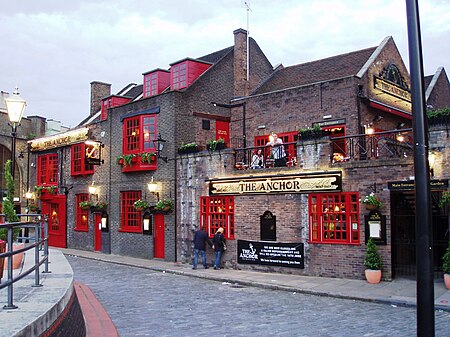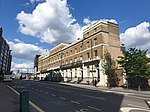The Anchor, Bankside

The Anchor is a pub in the London Borough of Southwark. It is in the Bankside locality on the south bank of the River Thames, close to Southwark Cathedral and London Bridge station. A tavern establishment (under various names) has been at the pub's location for over 800 years. Behind the pub are buildings that were operated by the Anchor Brewery.The Anchor started life as the "brewery tap room" for the Anchor Brewery, first established in 1616. Michelin's travel guide incorrectly states that the Anchor was rebuilt in 1676 after the Great Fire of London in 1666 destroyed it. This was impossible as the fire never reached the southern side of the Thames outside of the limits of the City of London. The book The Rough Guide to London states that the establishment was first built in 1770. The establishment was also rebuilt again in the 19th century.The establishment has been described as "Bankside's oldest surviving tavern" in the book Secret Bankside: Walks in the Outlaw Borough.
Excerpt from the Wikipedia article The Anchor, Bankside (License: CC BY-SA 3.0, Authors, Images).The Anchor, Bankside
Bank End, London Borough (London Borough of Southwark)
Geographical coordinates (GPS) Address Website External links Nearby Places Show on map
Geographical coordinates (GPS)
| Latitude | Longitude |
|---|---|
| N 51.5073 ° | E -0.0931 ° |
Address
The Anchor
Bank End
SE1 9BU London, Borough (London Borough of Southwark)
England, United Kingdom
Open on Google Maps










